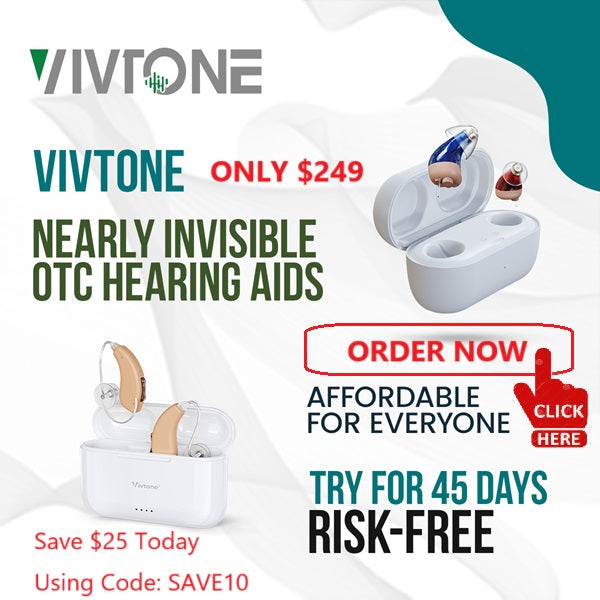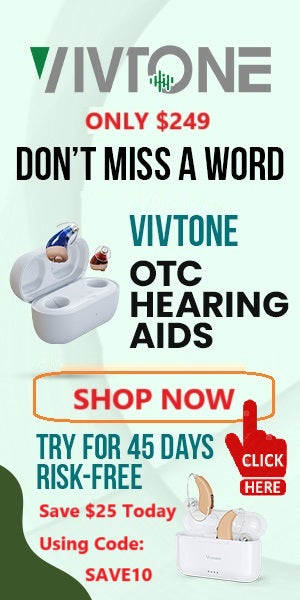Are Cheap Rechargeable Hearing Aids Worth It? A Buyer's Guide

Quick Answer
Yes, affordable rechargeable hearing aids are definitely worth it for many people with mild to moderate hearing loss. Budget models ($100-$800) can provide meaningful hearing improvement if they include the essentials: clear speech amplification, basic noise reduction, feedback cancellation, comfortable fit, all-day battery life, and water resistance. While they won’t match the sophisticated features of premium models ($2,000+), mid-range options ($800-$2,000) offer an excellent balance of performance and value.
Introduction
Looking for hearing aids that won’t break the bank? Many people worry that affordable options just won’t work well enough. The truth is, you can find good rechargeable hearing aids without spending a fortune—you just need to know what to look for and what to avoid. Different price points offer different features, and some budget-friendly models provide surprisingly good results. This article covers what to expect at various price ranges, potential pitfalls to watch out for, smart shopping strategies, and which essential features you shouldn’t compromise on when buying affordable hearing aids.
What to Expect at Different Price Points

Budget Models ($100-$800 per pair)
Budget rechargeable hearing aids typically do little sound amplification with mild noise reduction. They offer few customizations and simpler designs. While they have sound amplification, they often do not perform well in very noisy environments like restaurants or loud rooms. They typically have 1-2 simple programs and simple volume settings. Battery lifespan is typically 15-20 hours on one charge.
Mid-Range Models ($800-$2,000 per pair)
Mid-range rechargeable hearing aids incorporate more advanced features like better noise filtering, feedback cancellation, and sometimes smartphone integration. They include 3-4 listening programs for different environments and more natural sounds. Enhanced directional microphones are usually part of the package to help with conversation focus. Battery life improves to about 20-24 hours per charge, and many include more comfortable fitting options.
Premium Models ($2,000-$6,000+ per pair)
High-end rechargeable hearing aids provide sophisticated sound processing with improved noise reduction and speech enhancement. They offer multiple customizable programs, automatic adaptive environments, and seamless connectivity with phones and other devices. They include features like tinnitus masking, charging cases, and app-based controls. These devices provide the most natural listening with battery life, usually over 24 hours per charge, and the most discreet styling.
What Red Flags Should You Avoid When Buying Hearing Aids?

While value is achievable with low-cost hearing aids, there are a few cheap models that are likely to be disappointing. Quality or performance isn’t always a matter of price. Having an idea of what issues to be aware of means you don’t waste your money on hearing aids that won’t suit your needs.
- Watch Out for Unknown Brands: A few companies selling very cheap hearing aids have little industry experience or clinical backing. Discover how long the company has been in business and whether they have audiologists or hearing specialists on staff. Look for brands that provide clear information about their technology and have authentic customer reviews on third-party sites.
- Customer Support Matters: Proper hearing aids need frequent adjustments and fixes. Companies offering little or inconvenient customer support might have you mucking about with hearing aids you can’t actually use. Before purchasing, test their customer service by phoning or emailing technical questions and see how well and how quickly they respond. See if they offer video support, detailed manuals, or on-site support.
- Beware of Hidden Costs: The advertised price might not include everything you need. Some companies charge extra for essential accessories like cleaning tools, storage cases, or replacement domes and filters. Others may require paid app subscriptions for full functionality. Ask for a complete breakdown of all costs before purchasing, including what replacement parts will cost when needed.
- Fitting Options Make a Difference: One-size-fits-all gear doesn’t usually work so well for anyone’s own ear size. Very few fitting alternatives typically mean less-than-comfy wear or less-than-optimal sound delivery. Look for several dome sizes, alternate ear hook styles, or mold compatibility between different brands. Excellent affordable models have some type of fitting to ensure proper fit and sound presentation.
How Can You Save Money on Quality Rechargeable Hearing Aids?

Finding affordable hearing aids doesn’t mean settling for poor quality. With the pitfalls in mind, you can use several smart shopping strategies to find hearing aids that perform well without excessive cost.
Time Your Purchase for Sales
Some hearing aid makers provide substantial savings on major holidays such as Black Friday, Cyber Monday, and year-end clearance sales. Companies also have periodic promotional discounts on new model introductions, offering clearance of existing models at discount prices. You can get reminders of sales promotions from email newsletters of reputable hearing aid companies with special subscriber promotions of 15-30% off the list price.
Shop Around Different Retailers
Prices for identical models of hearing aids differ significantly between merchants. Online stores like Vivtone are cheaper than brick-and-mortar stores due to lower overhead costs. Some audiologists belong to discount networks or offer price guarantees. Veterans will need to check whether VA benefits cover at least part, or even all, of hearing aids. Medicare Advantage plans may have hearing aid allowances worth considering.
Review Customer Reviews
Customer reviews reflect real-life performance beyond marketing hyperbole. Look for patterns in reviews rather than one complaint or compliment. Pay attention to commentary on battery life, sound quality in different environments, comfort for extended wear, and customer service interactions. Reviews reporting extended use (6+ months) are better measures of durability and ongoing performance. Compare reviews across multiple venues like the company website, Amazon, Google, and hearing aid forums for a balanced perspective.
What Features Matter Most in Budget Hearing Aids?

Smart shopping isn’t just about finding the lowest price—it’s about ensuring your hearing aids have the fundamental capabilities needed for daily use. While premium features are nice, certain core functions determine whether your hearing aids will be helpful or frustrating.
Feature 1: Hearing aids should make speech clearer
Budget hearing aids should provide clear sound amplification appropriate to your kind of hearing loss. Opt for devices that provide at least the basic frequency control to address your specific hearing profile. Most decent affordable models correct mild to moderate hearing loss quite effectively, with amplification ranging from 25-40 decibels. Devices should make speech much clearer but not necessarily louder.
Feature 2: Good hearing aids reduce background noise
Background noise interferes with conversation. Basic noise reduction technology helps to filter out constant background sounds like fans or traffic. While less expensive models won’t completely eliminate challenging noise situations, they should at least possess basic noise filtering algorithms that improve the signal-to-noise ratio in moderately noisy situations.
Feature 3: No whistling sounds when you move
Whistling sounds (acoustic feedback) make hearing aids useless and embarrassing. Even entry-level models should have basic feedback cancellation technology that eliminates or instantly removes the sounds when they occur. This feature is particularly useful when you’re on the phone, hugging someone, or wearing a hat.
Feature 4: Comfortable fit prevents irritation
Discomfortable hearing aids end up in a drawer, unused. Look for devices that have assorted dome sizes (typically small, medium, and large) to suit your ear canal. Weight should be evenly distributed so that the device won’t move around when moving about. Materials should be hypoallergenic and smooth to the skin, without any sharp edges that will chafe with extended wear.
Feature 5: Batteries should last all day
Rechargeable hearing aids should provide at least a full day of use (14-16 hours minimum) on a single charge. The charging system should be simple to use, with visual cues for charging status. Look for those with quick-charge options that provide you with several hours of use after just 30 minutes of charging—particularly handy if you occasionally forget to charge overnight.
Feature 6: Water resistance protects your investment
Exposure to regular moisture from rain, sweat, and humidity will ruin hearing aids. Look for devices with an IP rating (Ingress Protection) of IP57 or greater, meaning that they can withstand exposure to light water. This minimum water resistance is necessary for longevity and preventing damage from ordinary use.
Get Better Hearing Without Breaking the Bank

Affordable rechargeable hearing aids can actually help you hear better without costing you an arm and a leg—you just need to shop smart. Compare models for the basics we’ve covered: good sound, some noise reduction, no disgusting feedback, comfortable fit, stable battery life, and water resistance.
Your hearing is worth too much to completely skimp on quality, but with some research and realistic expectations, you can find affordable hearing aids that actually enhance your life. Why not? Good hearing is closer than you think.
Explore budget-friendly rechargeable hearing aids that offer clear sound, noise reduction, and comfort without compromising quality.
Explore budget-friendly rechargeable hearing aids that offer clear sound, noise reduction, and comfort without compromising quality.





